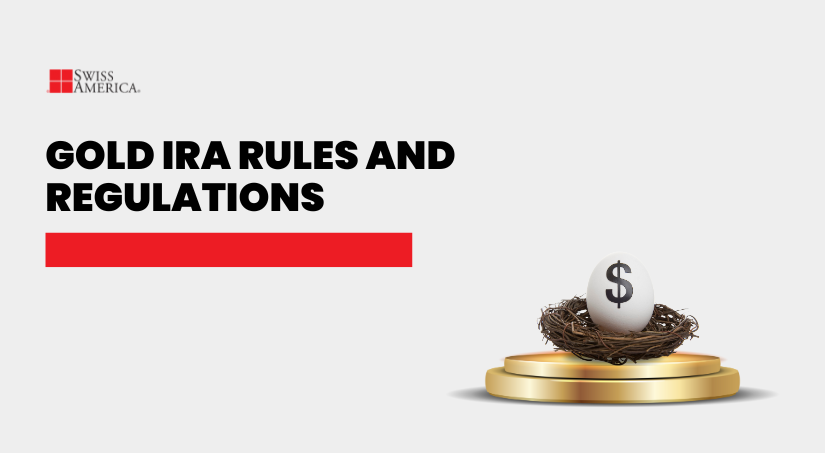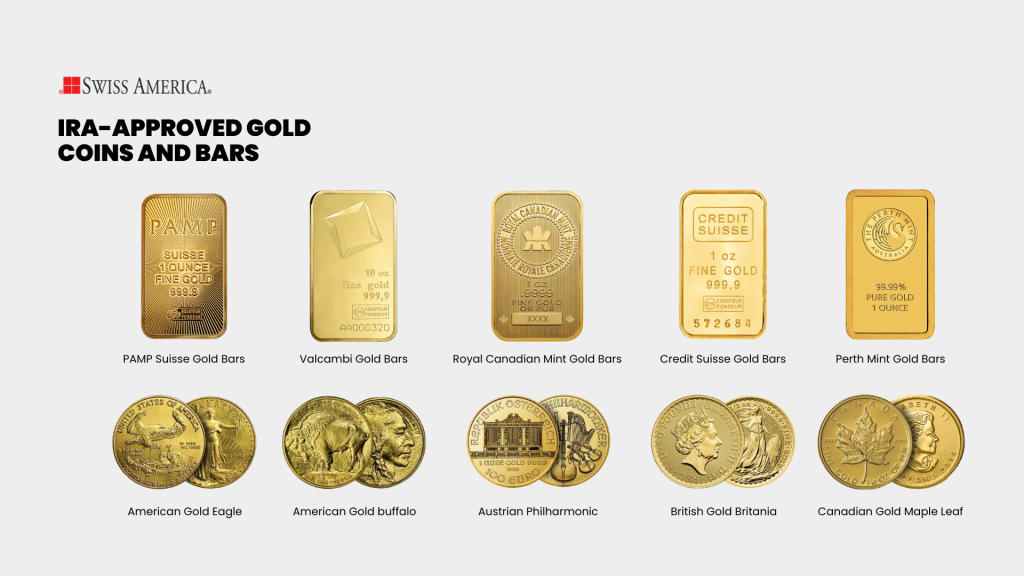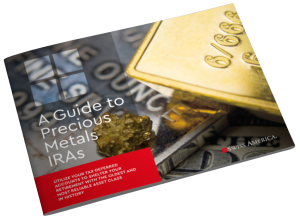
Self-directed IRAs let you invest in alternative assets for retirement. If you’re looking at owning physical gold, an IRA is one of the most tax-effective ways to do it. These accounts come with specific IRS requirements you’ll need to follow if you want to keep the tax-advantaged status and avoid any penalties.
This article covers the Gold IRA rules and regulations you need to know before opening your account and buying physical metals.
Why investors are buying gold in 2025
Before we get into the actual rules, it’s worth looking at why investors are buying gold right now. As of this writing, the stock market’s doing fine and the economy seems strong. But gold prices are through the roof. They’ve hit record highs, even beating forecasts that JPMorgan Chase made just a few months ago.
It comes down to how investors feel about the market. Inflation is still high, there’s uncertainty around trade and the U.S. dollar, and investors are nervous about what’s next.
All of that drives people towards gold investments, and a Gold IRA is one of the best ways to do it.
Overview of IRS rules for physical Gold IRAs
You can buy precious metals inside this tax-advantaged retirement account and get all the benefits of a traditional IRA. For example, you can defer taxes until retirement or if you have a Roth IRA, grow your assets tax-free.
Here’s a quick overview of the specific rules and regulations the IRS requires for compliance.
| Category | IRA rules |
| Approved metals | Gold, silver, platinum, palladium |
| Purity | Gold 99.5%, silver 99.9%, platinum & palladium 99.95% |
| Form | Coins and bars from approved sources |
| Custodian | Must use an IRS-approved custodian |
| Storage | IRS-approved depository |
| Contribution limit (2025) | $7,000 per person, $8,000 age 50+ |
| Withdrawals | Allowed at 59½ |
IRA-approved precious metals
The IRS has standards for what precious metals you can keep in these accounts.
- Approved metals: You can buy gold, silver, platinum, and palladium. The IRS only allows specific bullion coins and bars, like the American Eagle, Canadian Maple Leaf, or Valcambi bars, are in a Gold IRA. Note that the American Gold Eagle coin is IRA-approved despite its 91.67% purity because it has special status.
- Purity: Gold must be 99.5% pure, silver 99.9% and platinum and palladium 99.95%.
- Form: Specific coins and bullion bars from government mints or approved manufacturers. Jewelry, collectibles, and rare coins don’t qualify.
Precious metals custodian
Every Gold IRA needs to be managed by a custodian. They set up your account, follow legal guidelines, and verify compliance with any purchases or trades. The custodian facilitates the purchase of precious metals from a dealer, but does not provide financial advice.
If you don’t already have a custodian in mind, your gold dealer can recommend one. For example, we often refer investors to Gold Star Trust, but we’ll work with any custodian that has experience in precious metals IRAs.
Storage requirements
The IRS requires you to hold Gold IRA assets in an approved depository. Investors cannot use IRA-owned gold for personal benefits, like displaying the coins or using them as collateral. This is part of the reason why you’ll work with a custodian, because they take care of the storage details.
If you try to keep metals in your house or a safe deposit box, you lose the tax benefits, and you’ll incur penalties because the IRS considers this an early distribution.
Contribution limits
A self-directed IRA has the same contribution limits and eligibility rules as a traditional and Roth IRA. Contribution limits for a Gold IRA in 2025 are $7,000 for those under 50 and $8,000 for those 50 and older.
Note that if you have a Roth IRA, you’ll need to meet income criteria for annual contributions.
Withdrawing from a Gold IRA
A Gold IRA is a retirement vehicle, so you’ll hold the metals in the account until retirement age of 59½. Then, the tax rules and regulations are:
- Traditional Gold IRA: You’ll pay income tax at the time of withdrawal. You can sell your metals and take the cash. Or, you can ask the custodian to ship your gold and other precious metals directly to you.
- Roth Gold IRA: With this type of individual retirement account, you don’t pay taxes as long as you’ve held the account for at least 5 years before withdrawing.
To note, IRS Required Minimum Distributions (RMDs) for traditional Gold IRAs begin at age 73, requiring the liquidation of some gold.
Rules for setting up a physical Gold IRA
Here’s how you can get started adding gold or other precious metals to your retirement portfolio:
Step 1: Find a custodian
You can find a self-directed IRA account custodian by asking your gold dealer or searching review sites like TrustPilot or the Better Business Bureau. Look at the company’s overall ratings and longevity. Take a look at their fees since those can impact your returns.
Here are some questions to ask:
- What are all the fees I can expect?
- How will I see the status of my investments?
- What type of support do you offer if I have questions?
Step 2: Open an account
Start the paperwork with your custodian to open your account. You’ll fill out an application with your personal and financial information. From there, you’ll also choose whether you have a traditional or Roth IRA and review the IRS disclosures and legal documents.
Step 3: Fund your account
The next step is to add money to your account. You can do this with new contributions, transfers, or rollovers. Here are the details for each:
New contributions
You can add new funds to the account, subject to the IRS’s annual contribution limit.
Transfers: IRA to IRA
If you have an existing IRA and want to move funds into your Gold IRA, you can transfer them directly. The money goes from one custodian to another without you ever touching it. This avoids any tax penalties or fees.
Rollovers: From 401(k) or employer plans
Maybe you’ve left a job and still have a 401(k), 403(b), TSP, or similar retirement account. You can roll those funds into a Gold IRA with a direct rollover. Just contact your plan administrator and let them know you want to transfer your funds.
They’ll send the money directly to your self-directed IRA custodian.
Step 4: Buy precious metals
Next, you’ll work with your gold dealer to decide which gold and other precious metals you want to buy. Gold IRA companies can provide guidance on what bars and coins qualify. Here are some of the most common metals you can include in your account:

Your custodian then buys physical precious metals on your behalf. They’ll also coordinate with the dealer to ship your metals to the IRS-approved depository.
Gold IRA distributions and taxes
Whether you’re pulling out cash or gold coins, traditional Gold IRA distributions get taxed as ordinary income. The amount you withdraw gets added to your total income for the year, which might move you into a higher tax bracket.
A benefit of holding precious metals in your IRA is that there’s no capital gains treatment on distributions. With a traditional IRA, you’ll just pay income taxes at whatever your current rate is in retirement.
With a Roth IRA, as long as you’ve held the account for 5 years, your withdrawals can be tax-free.
Penalties for not following Gold IRA rules
The IRS enforces Gold IRA compliance, and the penalties can hurt your returns if you don’t follow the rules. Gold IRAs require detailed record-keeping of all transactions and valuations for IRS compliance. Here’s what can happen if an IRA owner is out of compliance:
- Early withdrawals: Taking money out before age 59½ triggers a 10% penalty on top of income taxes.
- Home storage: Keeping metals at home or in a safe deposit box counts as a distribution, which makes the total value of your precious metals taxable and subject to penalties.
- Excess contributions: Putting in more than the annual limit creates a 6% penalty each year until you fix it.
- Missed RMDs: If you don’t take required minimum distributions from a traditional IRA, the penalty is 25% of the amount you should have withdrawn.
- Buying ineligible metals: If you add collectibles or non-approved coins, the IRS can treat your whole account as a taxable distribution.
Here’s a quick summary of the penalties for not following IRS guidelines:
| Rule violation | Description | Penalty |
| Early withdrawals | Taking money out before age 59½ | 10% penalty + income taxes |
| Home storage | Keeping metals at home or in a safe deposit box | Full value taxed as distribution + penalties |
| Excess contributions | Putting in more than the annual limit | 6% penalty each year until fixed |
| Missed RMDs | Failing to take required minimum distributions | 25% of the required withdrawal amount |
| Buying ineligible metals | Adding collectibles or non-approved coins | Entire account treated as taxable distribution |
Final thoughts on Gold IRA regulations
Most experts recommend holding some gold or other precious metals as part of your overall portfolio to help diversify and reduce risk. Doing that with a tax-advantaged account just helps you save even more.
If it feels like there are a lot of rules, don’t worry. A Gold IRA provider like Swiss America can guide you through the process. In fact, for over 40 years, we’ve been helping investors purchase precious metals to protect their wealth.
If you want to learn more about Gold IRAs or gold investing, connect with our team today.
Gold IRA rules and regulations: FAQs
What is the downside of a Gold IRA?
The downside of a Gold IRA is that gold doesn’t provide income, and account fees can be higher than a traditional IRA. Fees for Gold IRAs are usually higher than standard IRAs due to custody, storage, and insurance costs.
What is the criteria for gold in IRA?
The physical gold coins or bars you buy must be at least 99.95% pure and come from approved government mints and accredited manufacturers.
When can you withdraw from a Gold IRA?
You can start withdrawing from your Gold IRA once you reach the age of 59 1/2. If you take out cash or physical gold prior to this, the IRS imposes a 10% penalty, plus you’ll pay ordinary income tax.
The information in this post is for informational purposes only and should not be considered tax or legal advice. Please consult with your own tax professionals before making any decisions or taking action based on this information.
